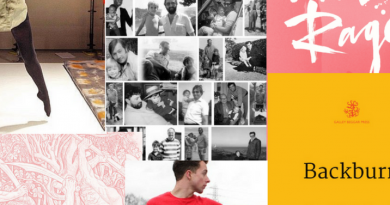Birds with Horse Hearts by Eleanor Walsh
–Reviewed by Cath Barton–
In Eleanor Walsh’s story of three women’s push and pull with life, with the men who have been and still are in their lives, and with one another, the constant is water, especially the flow of the monsoon-swollen river which is stronger than all of them. Birds with Horse Hearts (Ad Hoc Fiction) transports us to the Terai in Southern Nepal, where Putali and her mother Khusbhu live in the humid oppression of the jungle, rife with mosquitoes and leeches. They both long for escape to the cool air of Jomsom, in the mountains to the north: postcards of Nepal show pictures of Jomsom’s horses: ‘Always galloping against the painted stage prop of a sunset, their coats polished’.

Avery, a young woman from Iowa, meets Putali and Khusbhu during her travels in search of the place called Baghmara, the village her husband came from. But there are many villages in Nepal with that name. She visits one near Jomsom, but has no idea whether it is the right place and takes the bus straight back to the Terai. Khusbhu had declined her invitation to undertake the journey with her, but Avery will tell her about the horses:
‘She’ll want to hear about the foals that stretched velveteen muzzles out towards me from between the legs of guarded mares, and all the space there to make a new life.’
Avery is drawn to Putali, feels that in some way she mirrors her dead husband Narayan. She fantasises about rescuing her from the lonely men at the bus station ‘where she stays up all night and never boards the buses’. But they are bound to Khusbhu, until Putali is torn away from both of them.
When I was asked by Vancouver Flash Fiction recently for a flash writing tip, I wrote that the best flash fiction creates sound waves like a bell, its meaning amplified by the space around. And all the more so, I think, in a successful novella-in-flash, where each story sounds on its own, but is part of a peal of bells which leaves a strong resonance.
So it is with Walsh’s Birds with Horse Hearts, which deservedly won the Bath Novella-in-Flash Competition in 2019. She builds up layers in the story, as we glean information about the three women and their relationships from details of their lives.
In ‘An Everyday Colour’, Khusbhu tuts at Avery for wearing red, the colour for brides, while she herself wears white, the colour of widows, like an everyday colour. In this way they make their small protests against convention, as does Putali in making sketches of sleeping naked men at the bus station.
The relationship between the two younger women is portrayed with tenderness, though without romanticism. Dirt, decay and blood are part of life alongside sweetness – blood from the fish as they die, pooling from a rubbery leech which Putali burns off Avery’s foot with her lighter, from Avery’s foot again when she cuts it on a sickle blade, and her memory too of the sad way in which her husband died back in Iowa. Walsh’s descriptive detail is forensic. Here, in ‘The Blood and the Flowers’, in which Putali and Avery are making flower garlands for a festival, but many of the marigolds are dead:
“The monsoon was tireless this year. It washed away the buttery lustre in the flower heads, even diseasing the pleated skill of the buds.”
And here, in ‘Kumari’s Cage’, when Putali’s pet parakeet, whose wings are clipped, laments her loss to the wild parakeets that come down from the trees in a downpour:
“Kumari does not step outside the cage, but instead leans her head against the bars, repeating herself. Her language makes no sense to birds with the freedom to cross continents.”
In the concluding story, ‘Migration’, Khusbhu and Avery do finally go to Jomsom, but find the horses are not like those on the postcards, instead they are worn and broken, the body of a mare ‘an empty bird cage’. In this flash, Walsh achieves a beautifully poetic summation of the whole novella. Her writing is honest, brilliant in its sound and texture, and wholly without artifice.
Find out more about Birds with Horse Hearts on the Ad Hoc Fiction website.
Learn more about the Bath Novella-in-Flash Competition on the Bath Flash Fiction Award website.

Reviewed by Cath Barton — Cath Barton’s prize-winning novella The Plankton Collector (2018) is published by New Welsh Rarebyte and her second novella, In the Sweep of the Bay (2020), by Louise Walter Books. Cath is also active in the on-line flash fiction community.
Photo © Toril Brancher
Twitter: @CathBarton1 | Website: cathbarton.com





